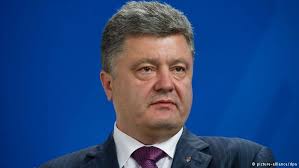(Presidential Power blog) Some observers argue Ukrainian President Petro Poroshenko has been determined to concentrate power in his own hands ever since his May 2014 election and has either failed or not seriously tried to eliminate high-level corruption. Yet nearing the end of his third year in office, he clearly lags far behind where his predecessor, Viktor Yanukovych, was three years into his presidency. Indeed, Ukraine in 2017 remains a much more politically open place than it was in 2013. Why has this been the case?
While leadership styles are clearly part of the story, there is a strong argument to be made that constitutional design is an important part of the explanation. When Yanukovych first came to power, he used his fresh mandate not only to get his own person installed as prime minister (something Poroshenko also achieved) but to establish a strongly presidentialist constitution, one that signaled his clear dominance over the parliament and all other formal institutions. This signaled to Ukraine’s most potent oligarchs and other power networks that Yanukovych was the unquestioned dominant authority and complicated their efforts to challenge him; even if his opponents had managed to win the 2012 parliamentary elections, which they did not, even this position would not have put them in a position to significantly limit presidential power. […]
Read More © Presidential Power (blog)











